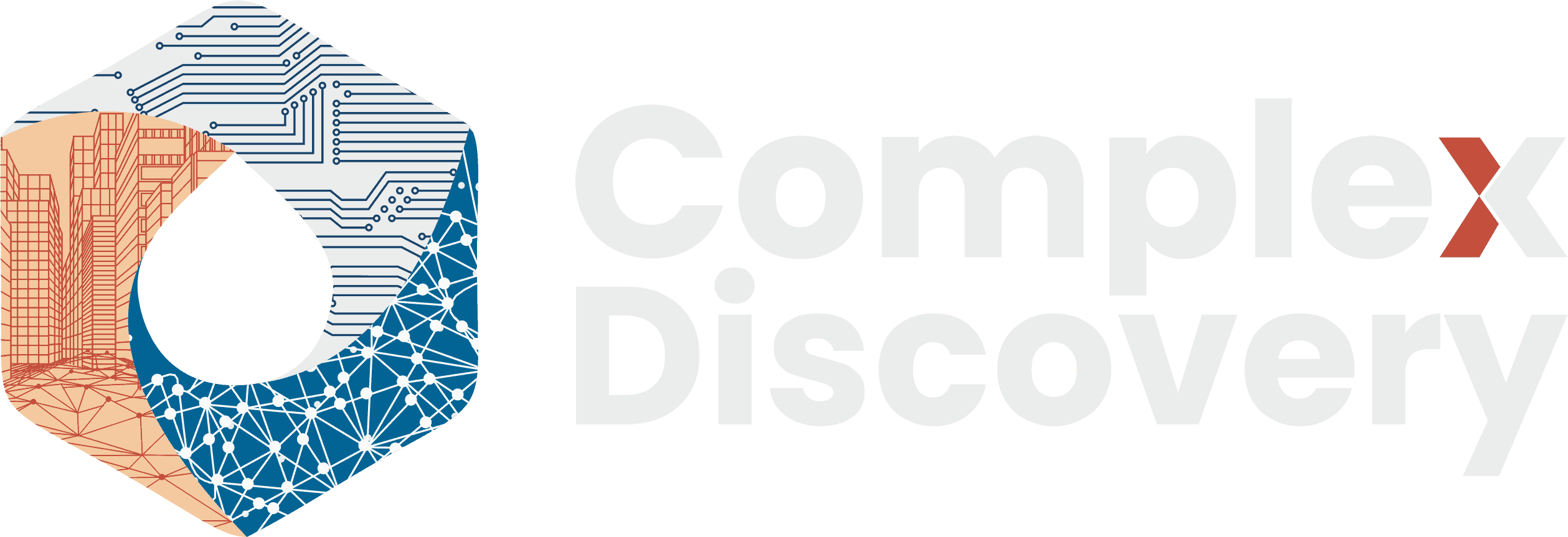Editor’s Note: The eDiscovery landscape is evolving rapidly, driven by a clear shift toward off-premise, cloud-based solutions. This article, informed by insights from the 2024-2029 eDiscovery Market Size Mashup by ComplexDiscovery OÜ, explores the factors fueling this transition and its implications for legal, technology, and corporate stakeholders. As organizations demand greater scalability, cost efficiency, and advanced capabilities, this shift is reshaping the industry. Whether you’re navigating workflows, building cloud-first infrastructures, or adopting cutting-edge analytics, understanding this transformation is crucial for staying competitive in the years ahead.
Content Assessment: First Look: Cloud-First Trends from the 2024-2029 eDiscovery Market Size Mashup
Information - 93%
Insight - 92%
Relevance - 93%
Objectivity - 94%
Authority - 95%
93%
Excellent
A short percentage-based assessment of the qualitative benefit expressed as a percentage of positive reception of the recent article from ComplexDiscovery OÜ titled, "First Look: Cloud-First Trends from the 2024-2029 eDiscovery Market Size Mashup."
Industry Research – Markets
First Look: Cloud-First Trends from the 2024-2029 eDiscovery Market Size Mashup
ComplexDiscovery Staff
The eDiscovery market is undergoing a significant transformation, with a clear shift from traditional on-premise software deployments to off-premise, cloud-based solutions. This trend, highlighted in the 2024-2029 eDiscovery Market Size Mashup by ComplexDiscovery OÜ, reflects the growing demand for scalability, accessibility, and efficiency in eDiscovery workflows.
On-Premise vs. Off-Premise: Market Share Trends
In 2024, on-premise eDiscovery solutions accounted for 27% of the total market, equating to $1.64 billion in spending. However, their share is expected to decline modestly over the next five years, reaching 22% of the market—or $2.10 billion—by 2029. While this represents steady growth in dollar value, it highlights the relatively slower pace of adoption compared to their off-premise counterparts.
In contrast, off-premise eDiscovery solutions dominate the market, representing 73% of the total in 2024 with spending of $4.44 billion. This share is forecasted to rise to 78% by 2029, with spending reaching $7.44 billion, an increase of nearly $3 billion over five years. The consistent growth of off-premise solutions reflects their growing importance in managing the complexities of modern eDiscovery.
What Drives the Shift to Off-Premise Solutions?
The transition to off-premise eDiscovery solutions is propelled by a combination of technological, operational, and economic factors. Organizations increasingly recognize the benefits of cloud-based platforms in addressing the growing demands of eDiscovery.
One of the primary drivers is scalability. As data volumes continue to grow exponentially, off-premise solutions offer the ability to scale resources seamlessly, enabling organizations to manage larger datasets without significant infrastructure investments. This scalability is complemented by cost efficiency, as cloud platforms eliminate the need for extensive upfront capital expenditures, offering pay-as-you-go models that align with project needs.
The rise of remote work has also fueled this shift. Distributed workforces require tools that enable secure remote access and real-time collaboration. Off-premise solutions inherently support these requirements, making them indispensable for modern eDiscovery workflows.
Additionally, advances in cloud security have alleviated long-standing concerns about storing sensitive legal data off-premise. With robust encryption, compliance certifications, and dedicated security measures, cloud-based platforms are increasingly viewed as safe and reliable.
Finally, technological innovation plays a critical role. Cloud-based solutions integrate cutting-edge analytics, artificial intelligence, and machine learning capabilities, providing organizations with advanced tools for processing, review, and case strategy. These innovations not only improve efficiency but also empower teams to derive actionable insights from complex data.
Chart: eDiscovery Software Market (Off-Premise + On-Premise)
eDiscovery Software Market (2024-2029) - On + Off Premise - 2025 ReportImplications for Stakeholders
As the eDiscovery market continues its shift toward off-premise, cloud-based solutions, the implications for stakeholders become increasingly significant. Legal professionals, service providers, and technology organizations must adapt to this evolving landscape to remain competitive and relevant.
Service Providers: Building the Cloud Foundation
Service providers in the eDiscovery space face the challenge of maintaining competitiveness in a market that increasingly prioritizes off-premise solutions. Key actions for these providers include:
- Investing in Scalable Infrastructure: To meet the demand for cloud-based services, providers must enhance their infrastructure to handle large and diverse datasets securely and efficiently.
- Offering Flexible Pricing Models: Pay-as-you-go and subscription-based pricing models align with client needs and highlight the cost-efficiency of off-premise solutions.
- Focusing on Data Security and Compliance: Providers must address client concerns about data privacy by ensuring adherence to regulatory frameworks such as GDPR, CCPA, and HIPAA. Offering compliance certifications and transparent security protocols can build client trust.
- Developing Value-Added Services: Leveraging AI and analytics, providers can offer predictive insights, early case assessments, and advanced data visualization, differentiating their services from competitors.
Legal Teams: Adapting to Cloud-Based Workflows
Legal professionals must align their workflows with the capabilities and benefits of cloud-based eDiscovery solutions. Key considerations include:
- Training and Adoption: Legal teams need training to leverage cloud-based tools effectively, ensuring seamless integration into existing workflows.
- Focus on Collaboration: Cloud solutions enable real-time collaboration between legal teams, clients, and external experts. Legal teams must adopt processes that maximize these capabilities.
- Cost Management: Cloud solutions often introduce flexibility in cost structures. Legal teams should explore ways to optimize budgets by balancing project-specific needs with available resources.
- Enhanced Security Protocols: While cloud platforms are increasingly secure, legal teams must enforce internal policies to safeguard sensitive client information during eDiscovery.
Technology Providers: Innovating for the Cloud-First Era
Technology providers developing eDiscovery tools have a unique opportunity to lead the transition to off-premise solutions. To capitalize on this trend, they must:
- Enhance AI and Machine Learning Capabilities: AI-driven tools can streamline data processing, predictive coding, and document review, making cloud platforms indispensable for eDiscovery.
- Ensure Seamless Integration: Tools must integrate easily with existing enterprise systems to encourage adoption by clients with complex IT environments.
- Develop Industry-Specific Solutions: Customizing offerings for industries like healthcare, finance, and technology can help providers address niche requirements and expand their market share.
- Prioritize User Experience (UX): Intuitive, user-friendly interfaces are crucial for widespread adoption among legal teams, many of whom are not technology experts.
Corporate Clients: Leveraging the Cloud for Compliance and Efficiency
For corporations engaged in eDiscovery, the rise of off-premise solutions offers opportunities to streamline compliance and enhance efficiency. Strategies for corporate clients include:
- Building Internal Expertise: Corporations must invest in training or hire professionals familiar with cloud-based eDiscovery tools to manage processes effectively.
- Establishing Clear Data Governance Policies: As data grows in volume and complexity, robust governance frameworks are necessary to ensure efficient eDiscovery workflows.
- Evaluating Vendor Partnerships: Corporations should carefully assess potential eDiscovery vendors for their ability to provide secure, scalable, and cost-effective off-premise solutions.
- Monitoring ROI on Cloud Investments: By tracking the impact of cloud-based solutions on cost, efficiency, and compliance, corporations can refine their long-term strategies for eDiscovery.
Industry as a Whole: Navigating a Transformative Shift
The shift to off-premise solutions signifies a broader transformation in the eDiscovery industry. Key impacts include:
- Accelerated Adoption of AI: With the rise of cloud-based platforms, the integration of AI tools will become standard, revolutionizing how data is processed and reviewed.
- Globalization of eDiscovery: Cloud platforms make it easier to manage cross-border eDiscovery, enabling firms to address the complexities of international litigation and regulatory compliance.
- Sustainability Considerations: As companies move to cloud platforms, sustainability practices in data centers—such as energy efficiency and carbon neutrality—will play a larger role in vendor selection.
By addressing these expanded implications, stakeholders across the eDiscovery ecosystem can position themselves to thrive in a cloud-first era.
A Cloud-First Future for eDiscovery
The trajectory of the eDiscovery market from 2024 to 2029 underscores a clear preference for off-premise, cloud-based solutions. While on-premise deployments continue to hold value in specific use cases, the dominant growth in off-premise spending reflects a broader industry trend toward flexibility, efficiency, and innovation. With off-premise solutions projected to represent 78% of the market by 2029, eDiscovery stakeholders must align their strategies with this shift to stay competitive in an evolving legal and regulatory landscape.
About the eDiscovery Market Size Mashup from ComplexDiscovery OÜ
The eDiscovery Market Size Mashup from ComplexDiscovery OÜ is an annual analytical report that provides a comprehensive overview of eDiscovery market trends, task-based expenditures, and technological advancements. Leveraging data from historical studies, market modeling, and future forecasting, the Mashup offers actionable insights for legal, business, and technology professionals. By examining key factors such as data growth, task allocation, and the impact of emerging technologies like Generative AI, the Mashup serves as a critical resource for understanding the evolving dynamics of eDiscovery. The 2024-2029 edition of the report will be published in early January 2025.
News Sources
- ComplexDiscovery OÜ. (2024). 2024-2029 eDiscovery market size mashup: Task allocation trends and market dynamics (Unpublished working paper). ComplexDiscovery OÜ.
- The Workstream of eDiscovery: Considering Processes and Tasks
- The Next Five Years in eDiscovery: Market Size Forecast for 2023-2028
Assisted by GAI and LLM Technologies
Additional Reading
- An eDiscovery Market Sizing Chronology from ComplexDiscovery
- eDiscovery Surveys Archives – ComplexDiscovery
Source: ComplexDiscovery OÜ


























